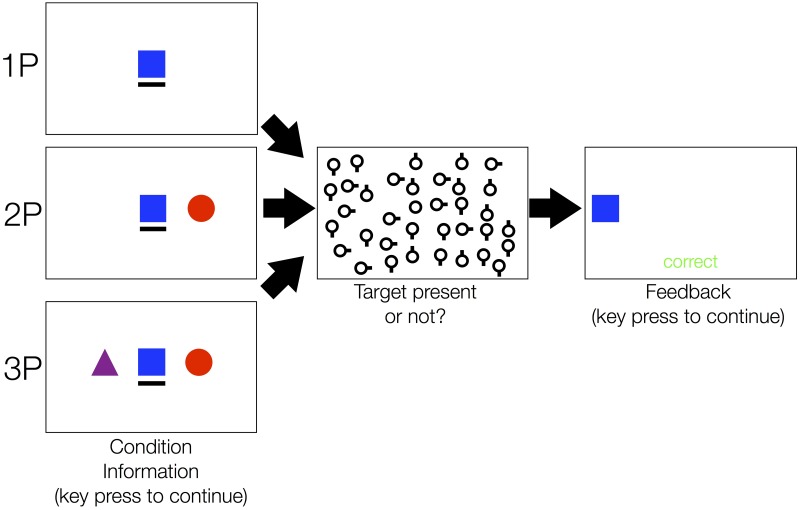Fig 1. Trial overview.
Prior to the experiment, each participant was assigned to one avatar (either a blue square, a red circle, or a violet triangle). Here, a trial overview from the perspective of a participant with the blue square avatar is shown. Before a trial started, participants saw whether they would perform the task alone (top row), in dyads (middle row), or in triads (bottom row). The black underscore indicated the identity of the participant (i.e., in this case the blue square). Hence, members of a triad were always aware whether they searched alone, in a dyad, or in a triad. In the search task, 36 objects are always displayed. In half of the trials, one of these objects was the target object (i.e., a circle) among distractor objects (i.e., circles with an antenna attached to it). Participants were required to indicate whether a target was present or absent. They were instructed to perform the search quickly but still accurately. In all conditions, only the first response counted to performance and the search was terminated once a response was given. Then, participants received performance feedback and were informed which co-actor responded.

